You are using an out of date browser. It may not display this or other websites correctly.
You should upgrade or use an alternative browser.
You should upgrade or use an alternative browser.
Chengdu J-20 news and analysis Part III
- Thread starter overscan (PaulMM)
- Start date
- Joined
- 21 April 2009
- Messages
- 13,745
- Reaction score
- 7,666

Air-launched missiles and the PLAAF | China's Chengdu J-20 multi-role fighter | Free IISS analysis
Is China looking to increase the number of air-to-air missiles that its Chengdu J-20 multi-role fighter can carry internally? The PLA Air Force continues to make progress across a range of air-to-air systems, writes Douglas Barrie.
- Joined
- 11 February 2010
- Messages
- 1,648
- Reaction score
- 2,695
Another option is of course making a low observable "external weapon pod"
FighterJock
ACCESS: Above Top Secret
- Joined
- 29 October 2007
- Messages
- 5,596
- Reaction score
- 5,923
Another option is of course making a low observable "external weapon pod"
I would like to see a low observable weapons pod on the J-20.
zebra159357
I really should change my personal text
- Joined
- 30 November 2018
- Messages
- 99
- Reaction score
- 278

China’s stealth fighter goes into mass production after thrust upgrade
The J-20B has overcome agility problems to finally be considered a fully fledged fifth-generation fighter, military source says.
- Joined
- 2 January 2006
- Messages
- 3,824
- Reaction score
- 5,115

China’s stealth fighter goes into mass production after thrust upgrade
The J-20B has overcome agility problems to finally be considered a fully fledged fifth-generation fighter, military source says.www.scmp.com
Oh please not Minnie Chan again!
I really don't know why anyone outside believe that BS,she writes and sometimes I have the feeling her true job is to spread faked information which were always eagerly picked up by any Western media.
Anyway let's take a look on her latest news and how much they contradict to everything we know and even to her own reports:
- as usual,. it is all again based on her "unknown source close to..."
- we know since mid-2019 that no J-20 has been built with AL-31FN but all since then are using WS-10C.
- why a TVC-AL-31FN-X if the WS-10B-3 was demonstrated in Zhuhai 2018 already and allegedly also tested on a J-20?
- it makes no sense to built one batch of J-20 with AL-31FN, then a second batch J-20A with WS-10C and now a third production batch of J-20B with a TVC-AL-31FNX??
- "They held a "ceremony last week, unveiling the modified J-20B" ... and started "production of the J-20B on Wednesday." ... makes no sense!
- already in 2018 she noted the J-20 is using the WS-10B (which was wrong then: https://scmp.com/news/china/militar...-stealth-fighters-missile-carrying-capability)
- and even earlier she mentioned the J-20 would already use serial WS-15s.

That all does not fit and contradicts all we know.
In_A_Dream
ACCESS: Top Secret
- Joined
- 3 June 2019
- Messages
- 671
- Reaction score
- 683
That all does not fit and contradicts all we know.
Which is really what China wants us to know.
Minnie Chan
O RLY ?

Well, Minnie mouse, time for you to learn self-defense and become a badass. Rather than playing the damzel-in-distress.
(cuts to Minnie kicking the arse of Evil Pete, kung-fu style)
zebra159357
I really should change my personal text
- Joined
- 30 November 2018
- Messages
- 99
- Reaction score
- 278
Oh please not Minnie Chan again!
I really don't know why anyone outside believe that BS,she writes and sometimes I have the feeling her true job is to spread faked information which were always eagerly picked up by any Western media.
I was a bit skeptical about the article, since I have read some bs on scmp before. Thank you for clarification though.
aonestudio
I really should change my personal text
- Joined
- 11 March 2018
- Messages
- 2,963
- Reaction score
- 7,481
Recently, there has been another good news in the field of China's aviation industry. The "lifting body side-striped wing-duck layout" adopted by China's fifth-generation stealth fighter J-20 won the patent award issued by the State Intellectual Property Office and the World Intellectual Property Organization. . This is also the first time that China Aviation Industry Corporation Chengdu Aircraft Design and Research Institute has won a national patent award.
Compared with the traditional duck-wing layout, the J-20 adopts the duck-style layout while adding wing body fusion lift body and side wing design. By designing a pair of side strips between the canard and the main wing, the canards and side strips can increase the main wing at the same time, so that the maximum lift coefficient of the J-20 fighter exceeds 2, which is the current world lift coefficient. The largest fighter, and the US F-22 fighter lift coefficient is 1.6.
Good news, the J-20 fighter won the gold design award of the United Nations Patent Award
sinodefenceforum.com Good news, the J-20 fighter won the United Nations patent award design gold medal, if the United States and Europ...
æ·æ¥ï¼æ¼20ææºè£è·èåå½ä¸å©å¥è®¾è®¡éå¥ï¼ç¾æ¬§è¥âæè¢âå¾ä»é±_ä¸å½
ç±äºé¿æ使ç¨èéä¼ç³»åææºï¼èç³»æææºç»ä¸å½äºä»£æºçç å设计产çäºé大影åï¼èèå¼ææºç»å¸çâé¸ç¿¼âå¸å±ä¹çå¨äºæ¼-20ææºç身ä¸ã å¯ä»¥è¯´ï¼ä¸å½æ¼-20ææºä½¿ç¨çâååä½è¾¹æ¡ç¿¼é¸å¼å¸å±â为å¶ä»å½å®¶è¿è¡äºâ¦
- Joined
- 29 November 2010
- Messages
- 1,773
- Reaction score
- 3,474
Chinese media has officially unveiled Shenyang's losing design for the J-20
they competed with Chengdu
pic from Alert5

the Shenyang design is called Snow Owl.
I wish I could access hui-tong's old page because there was a drawing of a stealth jet with this exact or similar tri-plane configuration
they were right a ll along.
they competed with Chengdu
pic from Alert5

the Shenyang design is called Snow Owl.
I wish I could access hui-tong's old page because there was a drawing of a stealth jet with this exact or similar tri-plane configuration
they were right a ll along.
- Joined
- 11 February 2010
- Messages
- 1,648
- Reaction score
- 2,695
- Joined
- 29 November 2010
- Messages
- 1,773
- Reaction score
- 3,474
- Joined
- 2 January 2006
- Messages
- 3,824
- Reaction score
- 5,115
thanks for the pics! but now im quite certain they all appeared on Huitongs site in the early to mid 2000s? before the J-20 was officially unveiled
maybe @Deino can confirm.
Yes ... this one too.
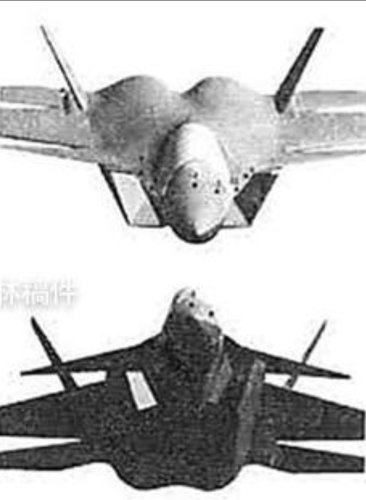
- Joined
- 2 January 2006
- Messages
- 3,824
- Reaction score
- 5,115
J20 only has DIRECTIONAL STEALTH that is only stealth from the front and is visible in VHF band. J20s PL15 BVR's SSKP (single shot kill probability) is okay but not good. https://intelpage99.blogspot.com/2019/06/myth-of-j20s-stealth.html
BLACK_MAMBA
ACCESS: Secret
- Joined
- 17 July 2019
- Messages
- 382
- Reaction score
- 877
J20 only has DIRECTIONAL STEALTH that is only stealth from the front and is visible in VHF band. J20s PL15 BVR's SSKP (single shot kill probability) is okay but not good. https://intelpage99.blogspot.com/2019/06/myth-of-j20s-stealth.html
This feels like a very sensationalist article especially with the all caps sentences and words spread around. I'd take it's content with a grain of salt.
There is no denying the J-20 is behind its US counterparts but that article reads with the lone agenda of bashing the Chinese and their capabilities. If anything they have shown more advancement in the field of stealth than the Russians have the last decade. With regards to sensor fusion we can only speculate how far off/close they are to parity/beating US levels of integration.
Last edited:
- Joined
- 27 December 2005
- Messages
- 17,743
- Reaction score
- 26,335
Sharkie is banned. Shameless self-promotion of own articles, which are objectively terrible; nationalistic ("India STRONG! China WEAK!") and poorly researched. Lets return to attempting objective analysis.
- Joined
- 11 February 2010
- Messages
- 1,648
- Reaction score
- 2,695
Have anyone tries to estimate the fuel capacity of the J-20's ?. So yeah basically im doing a bit of "look" of it using google Earth :

From there one can start guessing the wing area, The reference wing area to be more exact. For what i am trying to do was to use interpolations gained from comparing known aircrafts, then make an interpolation equation. For me it's a simple excel linears, which relates wing area with wetted area and then fuel capacity. Like wetted area seems to be better indicator as it's taking account of the whole fuselage, and it's more useful as it would also allow prediction of some aerodynamics qualities.
The problem however is that i dont have many data points in the first place. This is how the chart look like including the relationship.

The baseline data : These are from the Midland Red Star book.

The fuel capacity is internal fuel, no drop tanks and why its divided by 100 ?, that's for sake of readability of the chart.
So from that and my looks on the wing reference area provided by the image i arrived at wing reference area of 70.95 sqm. This then indicates wetted area of about 343.41 sqm. And estimate of fuel capacity of 11100 Kg. Accuracy is of course will be at doubt. pairing the equations with the baseline data, basically shows that the relationship can under-predict by 20% or over-predict by 6-10%.
Would love to hear suggestions for improvements.
Fuel capacity estimate can be used to guesstimate the range, endurance and avionics cooling capacity which can then be used to estimate the bound on TR module power. and then radar range.
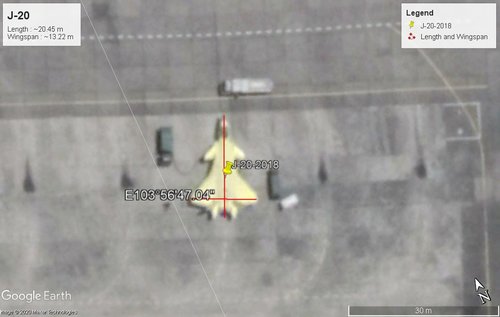
From there one can start guessing the wing area, The reference wing area to be more exact. For what i am trying to do was to use interpolations gained from comparing known aircrafts, then make an interpolation equation. For me it's a simple excel linears, which relates wing area with wetted area and then fuel capacity. Like wetted area seems to be better indicator as it's taking account of the whole fuselage, and it's more useful as it would also allow prediction of some aerodynamics qualities.
The problem however is that i dont have many data points in the first place. This is how the chart look like including the relationship.
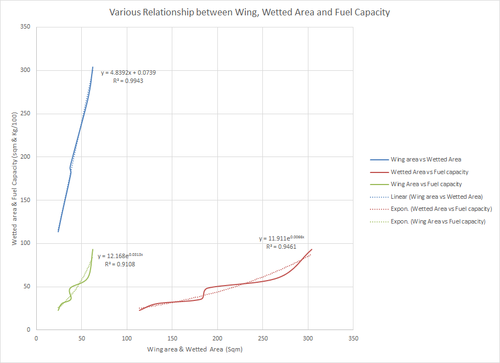
The baseline data : These are from the Midland Red Star book.

The fuel capacity is internal fuel, no drop tanks and why its divided by 100 ?, that's for sake of readability of the chart.
So from that and my looks on the wing reference area provided by the image i arrived at wing reference area of 70.95 sqm. This then indicates wetted area of about 343.41 sqm. And estimate of fuel capacity of 11100 Kg. Accuracy is of course will be at doubt. pairing the equations with the baseline data, basically shows that the relationship can under-predict by 20% or over-predict by 6-10%.
Would love to hear suggestions for improvements.
Fuel capacity estimate can be used to guesstimate the range, endurance and avionics cooling capacity which can then be used to estimate the bound on TR module power. and then radar range.
For what it's worth, I will paste my previous volume guesstimate from breaking down the drawings of planes to smaller geometric shapes.
My personal volume measurements (from available images and scaling j-20 to be 20,5 m long) say Raptor is around 46 cubic meters while J-20 is around 56 cubic meters. If true, that'd be some 20% larger. How much of it is useful? Who knows... Longer intake ducts would eat up a large portion, i'd say 4-5 cubic meters. Larger weapon bays should take around 1 more cubic meters. Internal structure could go either way, though. Future engines might be a bit larger but who's to know. Anyway, I'd say there might be room for 3-5 cubic meters of internal fuel, over the volume F-22 has.
Probably closer to 3 than 5, though.
My personal volume measurements (from available images and scaling j-20 to be 20,5 m long) say Raptor is around 46 cubic meters while J-20 is around 56 cubic meters. If true, that'd be some 20% larger. How much of it is useful? Who knows... Longer intake ducts would eat up a large portion, i'd say 4-5 cubic meters. Larger weapon bays should take around 1 more cubic meters. Internal structure could go either way, though. Future engines might be a bit larger but who's to know. Anyway, I'd say there might be room for 3-5 cubic meters of internal fuel, over the volume F-22 has.
Probably closer to 3 than 5, though.
- Joined
- 11 February 2010
- Messages
- 1,648
- Reaction score
- 2,695
For what it's worth, I will paste my previous volume guesstimate from breaking down the drawings of planes to smaller geometric shapes.
My personal volume measurements (from available images and scaling j-20 to be 20,5 m long) say Raptor is around 46 cubic meters while J-20 is around 56 cubic meters. If true, that'd be some 20% larger. How much of it is useful? Who knows... Longer intake ducts would eat up a large portion, i'd say 4-5 cubic meters. Larger weapon bays should take around 1 more cubic meters. Internal structure could go either way, though. Future engines might be a bit larger but who's to know. Anyway, I'd say there might be room for 3-5 cubic meters of internal fuel, over the volume F-22 has.
Probably closer to 3 than 5, though.
You have to put it into context. For example, F-22 Fuel tank locations and volume are not secret.
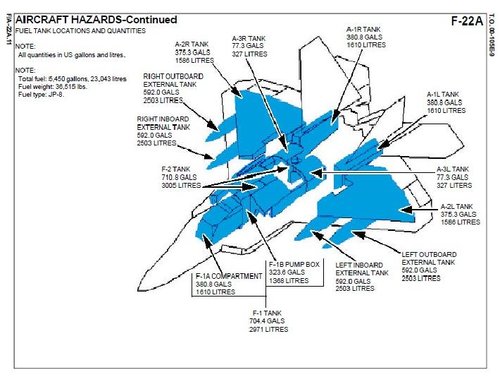
Makes the total internal volume for fuel for F-22 to be 3082 US gal or 11166 Litres (11.6 cubic meters) Assuming fuel density of 800 Kg/m^3 the fuel weight would be 9280 Kg.
From your volume calculations the fuel would take about 25% of the aircraft. Use the same ratio for your value for J-20 then you would have about 14 cubic meters or 14000 Litres or 11200 Kg of fuel weight. Additionally you can perhaps taking count of volume distribution on how much fuel in wing and how much in fuselage. The F-22 stores about 76% of its fuel in fuselage while remaining 24% in wings.
F-22 is most often cited with 8200 kg of internal fuel. https://www.lockheedmartin.com/en-us/products/f-22/f-22-specifications.html
J-20 wings are maybe 5% bigger than F-22's in area. Perhaps Lerx could add a bit more. But where J-20 would add more fuel, compared to F-22 is in the fuselage. A few meters longer section above the inlets. Those would be equivalents of the F2 and A3 tanks on the schematic above, only longer. Possibly somewhat longer F1 tanks (but not by that much) and again a few meters longer A-1 tanks.
Extremely rough estimate:
~3000 L in the tanks behind the cockpit
~5000 L in the tanks above the inlets
~4000 L in the tanks around the engines
~3300 L in the tanks within the wings/LERX
15300 L or 12.2 tons of fuel when comparing the hypothetical 9280 kg F-22 fuel load, translating to 10850 kg when comparing to the LM's claim of 8200 kg of internal fuel
but the above is still a bit pointless when the margin of error is likely huge, resulting in a ton or fuel more or less.
J-20 wings are maybe 5% bigger than F-22's in area. Perhaps Lerx could add a bit more. But where J-20 would add more fuel, compared to F-22 is in the fuselage. A few meters longer section above the inlets. Those would be equivalents of the F2 and A3 tanks on the schematic above, only longer. Possibly somewhat longer F1 tanks (but not by that much) and again a few meters longer A-1 tanks.
Extremely rough estimate:
~3000 L in the tanks behind the cockpit
~5000 L in the tanks above the inlets
~4000 L in the tanks around the engines
~3300 L in the tanks within the wings/LERX
15300 L or 12.2 tons of fuel when comparing the hypothetical 9280 kg F-22 fuel load, translating to 10850 kg when comparing to the LM's claim of 8200 kg of internal fuel
but the above is still a bit pointless when the margin of error is likely huge, resulting in a ton or fuel more or less.
- Joined
- 11 February 2010
- Messages
- 1,648
- Reaction score
- 2,695
but the above is still a bit pointless when the margin of error is likely huge, resulting in a ton or fuel more or less.
The point of making estimates in general is to get something reasonable out of whatever data points or method one possess, something which methodology can be traced, having clear reasoning on why it's done the way it is and allow it to be repeated by others. To get more accuracy one have to wait for more information to be available or strive to actually find one and then improve the methodology.
In context of J-20 or other stealth fighters in development, asking for a small maybe 10 or 5% of error margin is a huge demand and basically killing any discussion in the first place.
In my view as long as the methodology looks good or can be supported scientifically, then it's fine. Any error in its result is a subject of discussion.
According to my estimation, the volume of F-22 is 65 m3, J-20 - 64 m3. The weight of the fuel J-20 12800 kgMy personal volume measurements (from available images and scaling j-20 to be 20,5 m long) say Raptor is around 46 cubic meters while J-20 is around 56 cubic meters.
BDF
ACCESS: Secret
- Joined
- 14 March 2009
- Messages
- 284
- Reaction score
- 424
For what it's worth, I will paste my previous volume guesstimate from breaking down the drawings of planes to smaller geometric shapes.
My personal volume measurements (from available images and scaling j-20 to be 20,5 m long) say Raptor is around 46 cubic meters while J-20 is around 56 cubic meters. If true, that'd be some 20% larger. How much of it is useful? Who knows... Longer intake ducts would eat up a large portion, i'd say 4-5 cubic meters. Larger weapon bays should take around 1 more cubic meters. Internal structure could go either way, though. Future engines might be a bit larger but who's to know. Anyway, I'd say there might be room for 3-5 cubic meters of internal fuel, over the volume F-22 has.
Probably closer to 3 than 5, though.
You have to put it into context. For example, F-22 Fuel tank locations and volume are not secret.
View attachment 641002
Makes the total internal volume for fuel for F-22 to be 3082 US gal or 11166 Litres (11.6 cubic meters) Assuming fuel density of 800 Kg/m^3 the fuel weight would be 9280 Kg.
From your volume calculations the fuel would take about 25% of the aircraft. Use the same ratio for your value for J-20 then you would have about 14 cubic meters or 14000 Litres or 11200 Kg of fuel weight. Additionally you can perhaps taking count of volume distribution on how much fuel in wing and how much in fuselage. The F-22 stores about 76% of its fuel in fuselage while remaining 24% in wings.
This older Tech Ord is weird. it clearly shows an internal fuel load of 20,650lbs and while the official fuel load is 18,448lb. It could be the 2,202lbs is ullage volume and unusable fuel. This would seemingly make sense BUT if you look at the other aircraft in that particular TO they correspond accurately to known internal fuel loads. The F-15 listed isn't accurate for the F-15C but it is correct for the F-15A. I'm not sure why the discrepancy between the F-22's fuel and the others. Listing unsuable fuel makes sense since this is part of a CFR manual but 12% unusuable seems very high, especially for a fighter.
- Joined
- 9 October 2009
- Messages
- 21,944
- Reaction score
- 13,576
Could well be. They had to make a lot of compromises to shrink the YF-22 down into the (what was supposed to be cheaper) F-22A. They would have been much better served by sticking with the original design.
Last edited:
- Joined
- 3 June 2011
- Messages
- 18,328
- Reaction score
- 12,199
Lost a lot of fuel but gained speed (and probably maneuverability). Originally closer to 23k internal IIRC. Look at the aft area from below. Much slimmer in F-22A than YF-22.Could well be. They had to make a lot of compromises to shrink the YF-22 down into the (what was supposed to be cheaper) F-22A. They would have been much better served by sticking with the original design.
BDF
ACCESS: Secret
- Joined
- 14 March 2009
- Messages
- 284
- Reaction score
- 424
IMOHO Heat transfer (cooling system). You can still burn that amount of fuel in case of an emergency but would loose gradually your stealthiness and some systems could shut down.
Yeah I thought about that too. It seems odd that its that much of a limitation to reduce your usable fuel by 12%; I would think that one could accept not being able to use, say, the radar much during the recovery phase of flight which I'm guessing is the highest heat load in the avionic cooling loop. Granted there could be other items such as pumps that require the extra cooling too. Perhaps they can accept less combat capability at lower risk airfields and thus could ostensibly use that extra fuel in such a situation if the mission required it. Assuming the actual fuel volume is 20.6K. Anyway, didn't meant to drag it off topic as this is about the J-20.
The yf22 was sexier anyway.Could well be. They had to make a lot of compromises to shrink the YF-22 down into the (what was supposed to be cheaper) F-22A. They would have been much better served by sticking with the original design.
- Joined
- 29 November 2010
- Messages
- 1,773
- Reaction score
- 3,474
posted two days ago on youtube
video of J-20 releasing flares
View: https://www.youtube.com/watch?v=HV87uQ9WJnI&feature=emb_title
video of J-20 releasing flares
- Joined
- 3 June 2011
- Messages
- 18,328
- Reaction score
- 12,199
By that rational the F-35C is the same size as an F-100.Let's us remind for a min watching this all the aggressive diatribe posted against those that maintained early on that this fighter has gigantic proportions...
- Joined
- 2 January 2006
- Messages
- 3,824
- Reaction score
- 5,115
Let's us remind for a min watching this all the aggressive diatribe posted against those that maintained early on that this fighter has gigantic proportions...
The funny part on this is, this is a photoshop fake and as such in no way meaningful to determine the J-20's size.
Anyway we know the J-20's dimensions pretty well and it is simply shorter than a Flanker.
latenlazy
I really should change my personal text
- Joined
- 4 July 2011
- Messages
- 245
- Reaction score
- 37
If by gigantic you meant F-111 sized, which is what the original assertion for “gigantic proportions” was...yeah please do remind meLet's us remind for a min watching this all the aggressive diatribe posted against those that maintained early on that this fighter has gigantic proportions...
Let's us remind for a min watching this all the aggressive diatribe posted against those that maintained early on that this fighter has gigantic proportions...
Yeah and those who maintained that early on are still incorrect lol.
It's not a 22-23 meter long aircraft, and in TYOOL 2020 I can't believe anyone would still beat this horse, there's no flesh on it left at this point.
I come here for the informed debate, in a polite and educational manner, what do you come here for??
Agreed, but snarky jabs at something which has long been settled is very much not in the spirit of a debates which are polite and educational.
The topic of J-20's size and length has been something which is nearing a decade long discussion now, which in all honesty has been settled about 6-7 years ago at earliest, and definitively closed with comparison pictures like this (below) about 3-4 years ago.
At a certain point, continued raising of the same disproven talking point can no longer be considered a discussion in good faith and can only be responded to in equal manner.
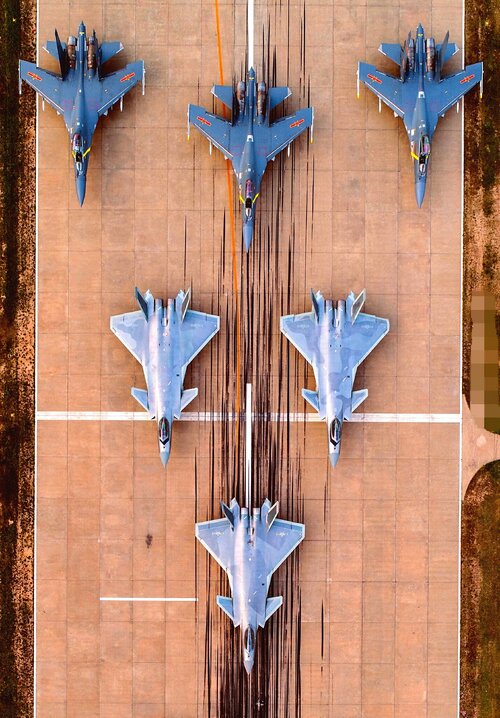
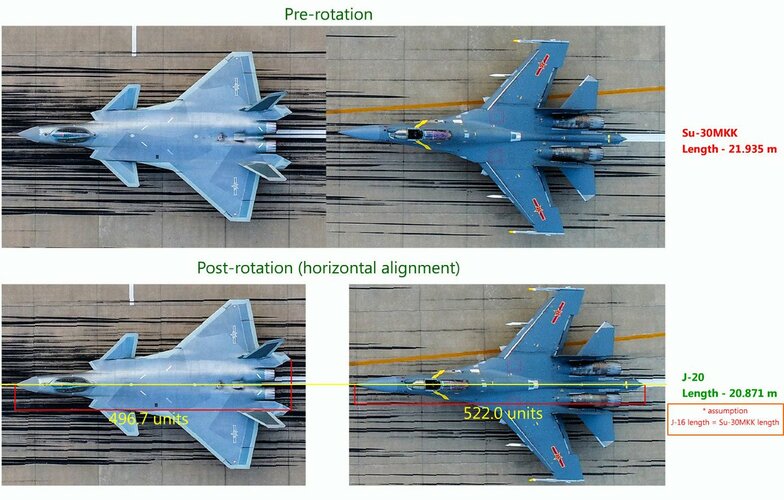
Similar threads
-
Shenyang FC-31 demonstrators / J-35 naval fighter / J-35A land-based version
- Started by Foxglove
- Replies: 995
-
-
-
-


